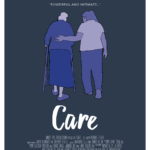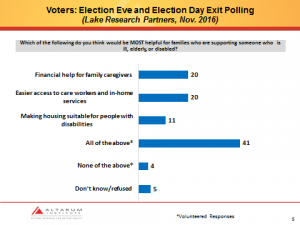
By Sarah Slocum
Across the U.S., we see more and more reports about a shortage of well-trained staff who are committed to providing in-home and other long term supports and services. The pinch of the shortage is apparent in many communities where it’s difficult to execute in-home service plans, and residential providers struggle to stay adequately staffed. We all see this problem, but what are we doing about it?
An upcoming Michigan Department of Health and Human Services Long Term Care Study, including Workforce, is described in legislation http://www.legislature.mi.gov/documents/2017-2018/billconcurred/Senate/pdf/2018-SCB-0848.pdf Altarum and PHI, will lead the workforce component of the study that will formally quantify the current workforce and its future and make recommendations for how to meet the growing need for recruiting new caregivers. Some have asked, “Why study this again? We already know it’s a problem.” By now, everyone agrees – it has become urgent to develop consensus around an action plan and move rapidly to implement solutions. That is the mission of our study – to analyze what causes shortages; to agree on what can make entry-level caregiving jobs economically competitive and to create a plan that outlines continuing education, training, promotion, and mentoring practices that can transform currently dead-end jobs into rewarding and sought-after careers.
One issue to tackle is inadequate pay. When entry-level caregiving jobs compete with retailers, it is no surprise that those less complicated and less personally stressful retail positions are filled first. So raising pay levels in stepwise increments is one obvious answer. But beyond pay, we can already see a need for skills-based, value-focused career ladders that motivate direct care staff to stay and advance as they gain experience, take extra training, and acquire new competencies. Proposals like Advanced Care Aides, Mentor Caregivers, and Lead Direct Care Workers (see a summary at: https://phinational.org/service/advanced-roles/) are gaining momentum as avenues for professionalizing the field of direct care into one that encourages entry-level employees to be part of larger care teams – to take partial responsibility for good patient outcomes that are in turn linked to the possibility of greater recognition and reward.
In California, the California Future Health Workforce Commission (https://futurehealthworkforce.org/) has a plan to eliminate the state’s shortage of care workers by 2030. A state investment of $3 billion over the next 10 years will support changes in education, training, and recruitment of workers, and includes strategies to address care worker shortages in rural areas with particular focus on the needs of people of color. California chose to take a hard look at the worker shortage and created a bold, multi-faceted set of solutions that can serve as a template for action in other states.
In Michigan and elsewhere, issues we already know about include the need for employee supports in areas like benefits, paid time off, childcare, transportation support and better training. How do we actually address these issues? Again, studies are an important first step – but they must be structured to lead to follow-up and implementation. Altarum and PHI (see PHI’s 2018 report on workforce at https://phinational.org/resource/the-direct-care-workforce-year-in-review-2018/) will collaborate to quantify typical benefits packages for direct care workers today and estimate costs for improving them. We’ll also focus on the costs and possible return on investment for employers opting to offer ongoing training programs to help their staff accumulate new skills. And we will endeavor to examine whether a case can be made that a well-trained and well-supported workforce can lead to better patient outcomes.
As one care worker in Michigan recently said, “It is my mission to care for people, and I don’t quit even though there are many hardships. Just a little help – a little more support, can keep me and my co-workers providing care. But we need the help now!”

